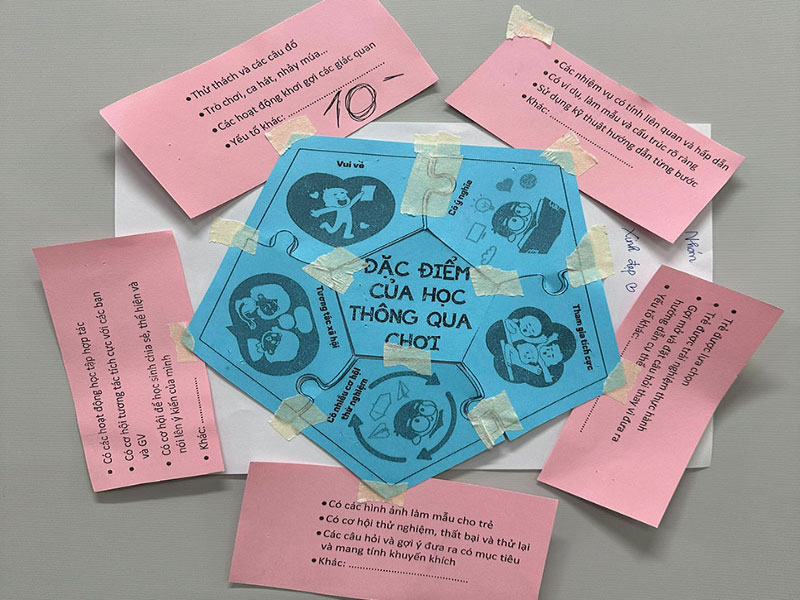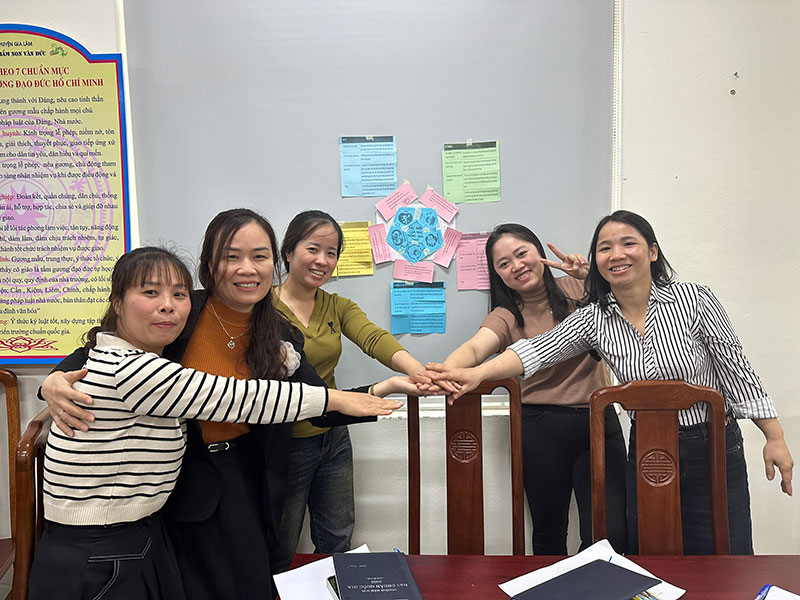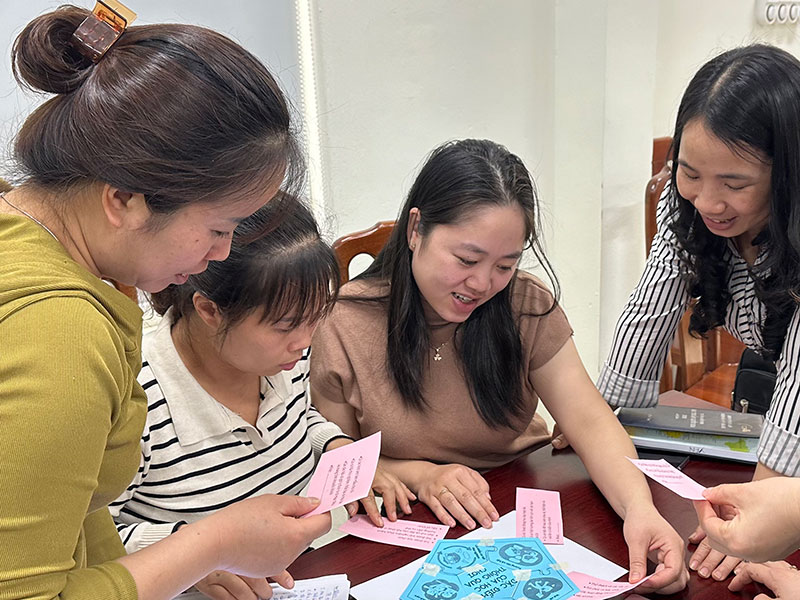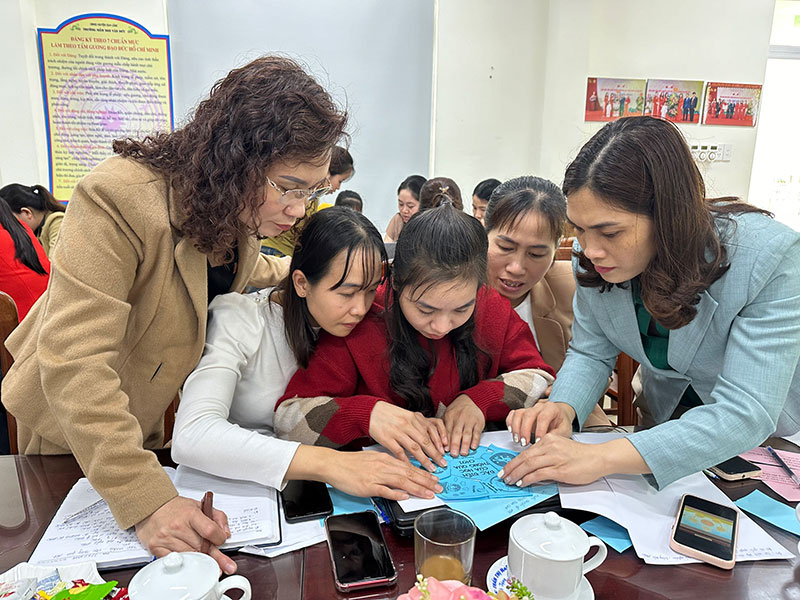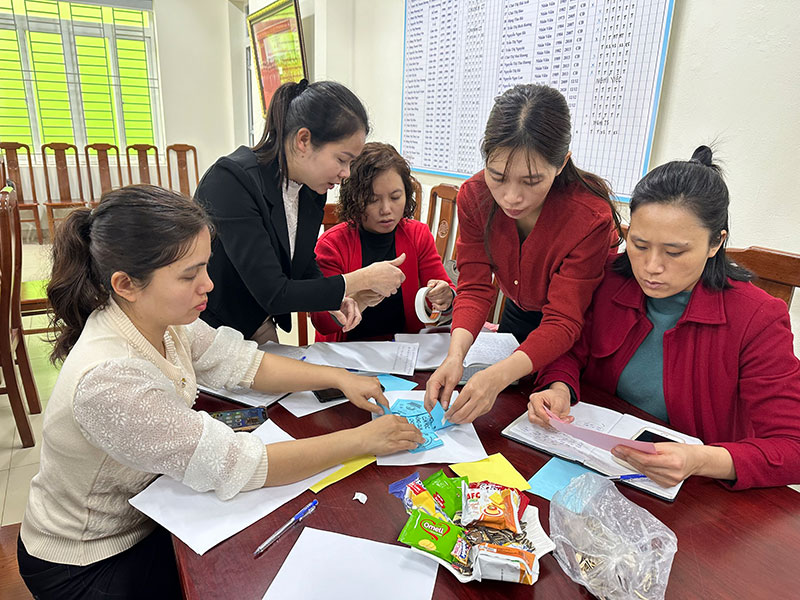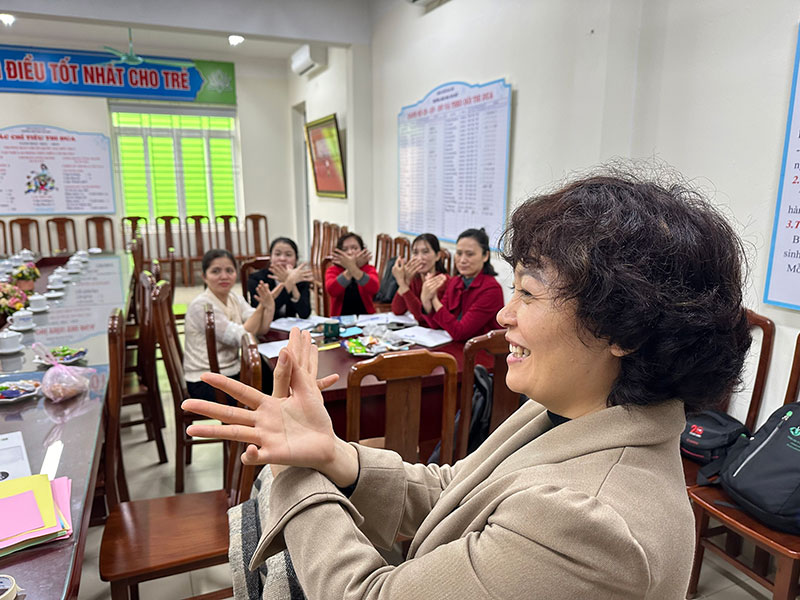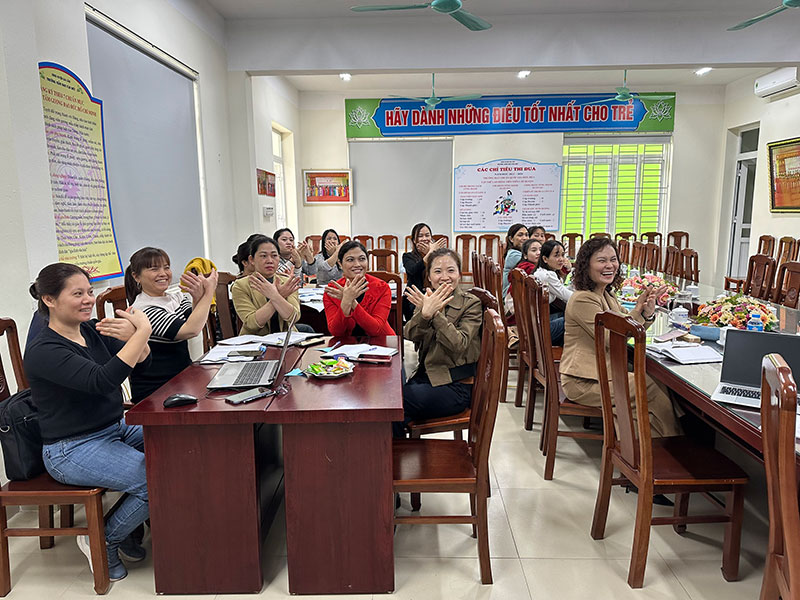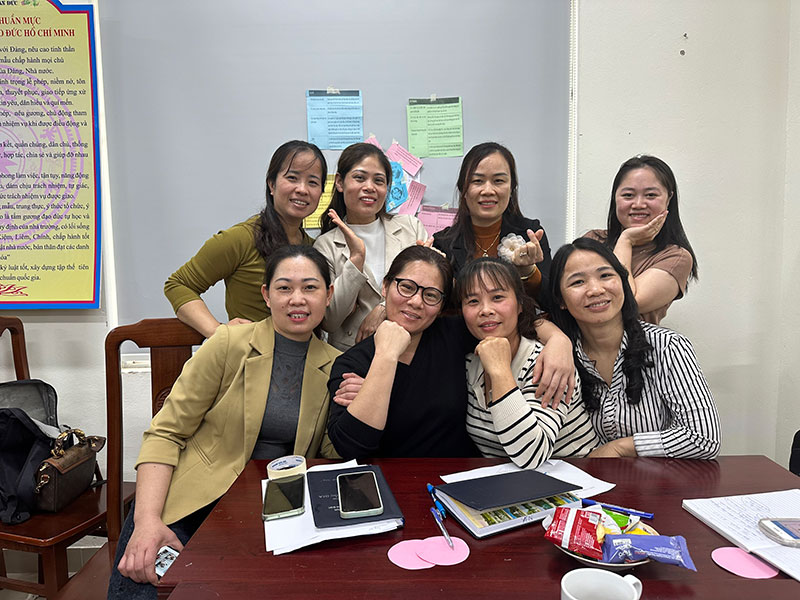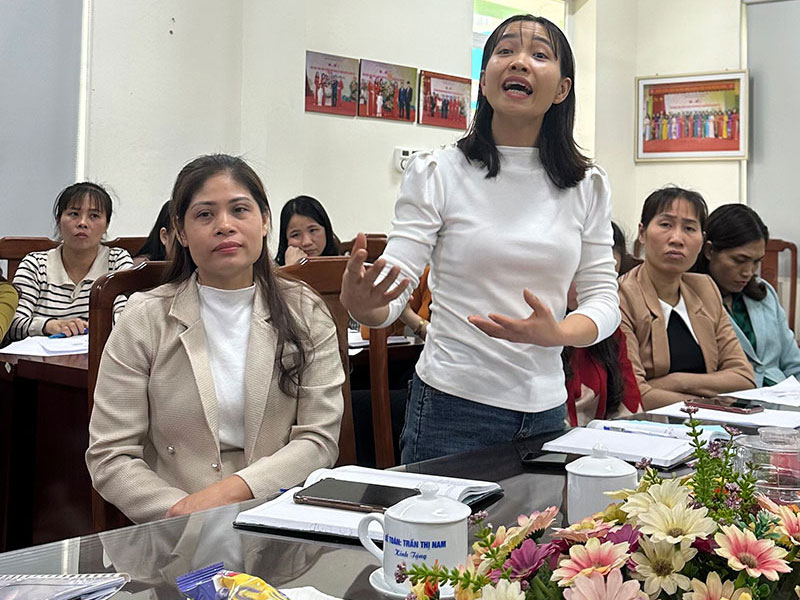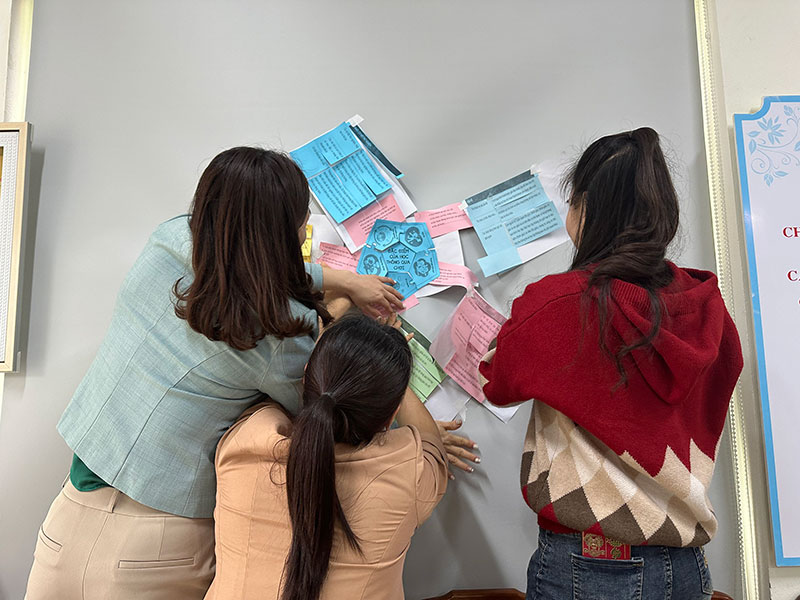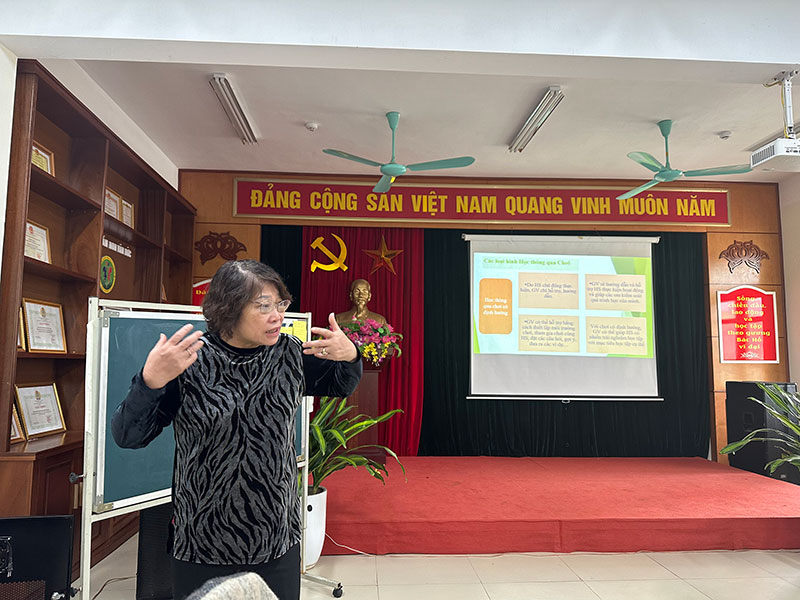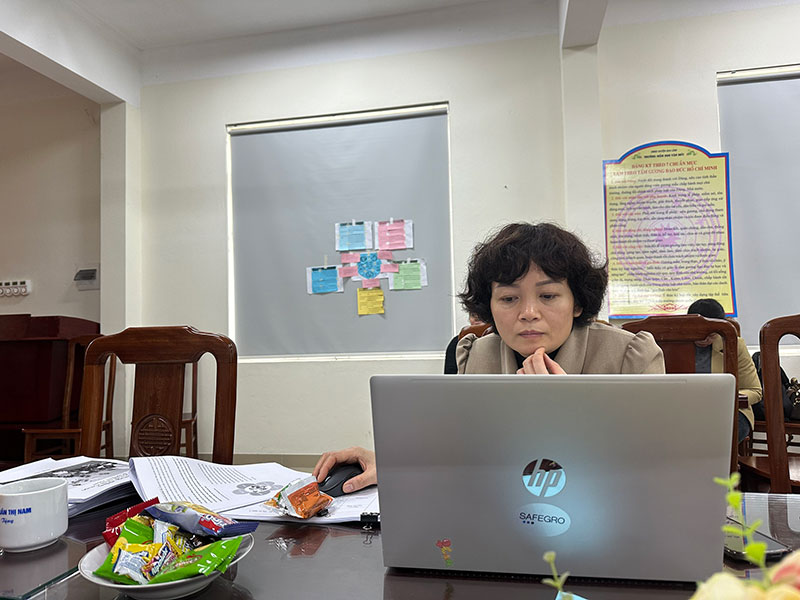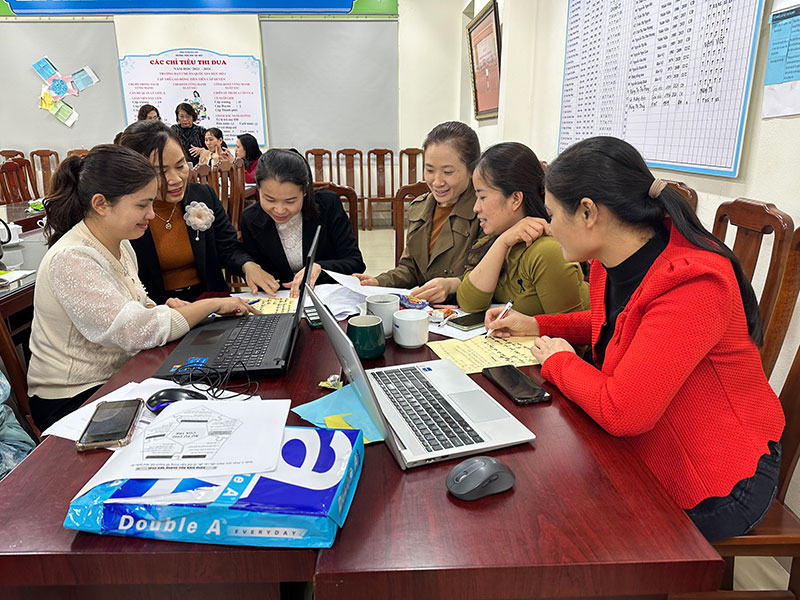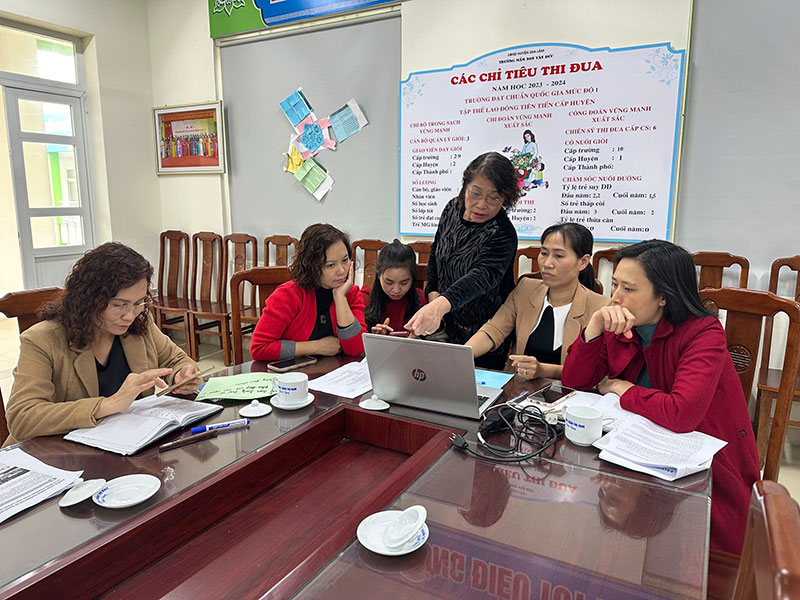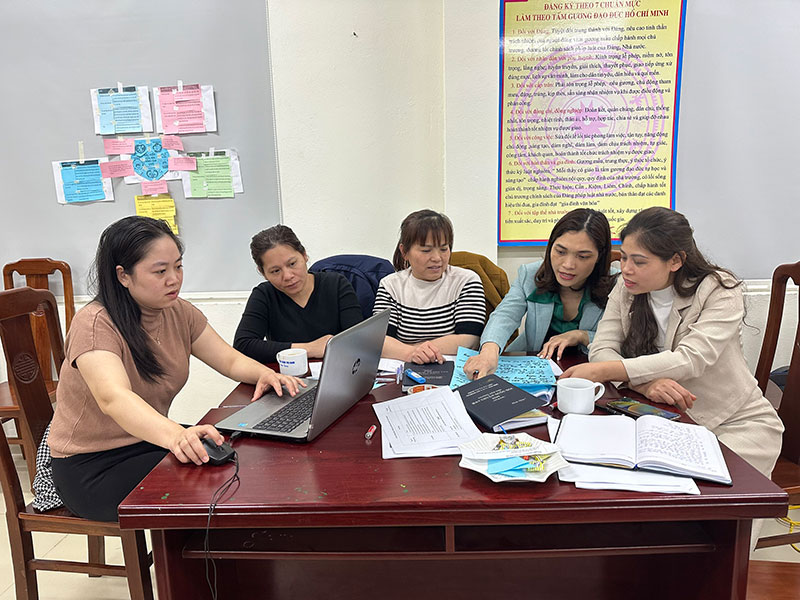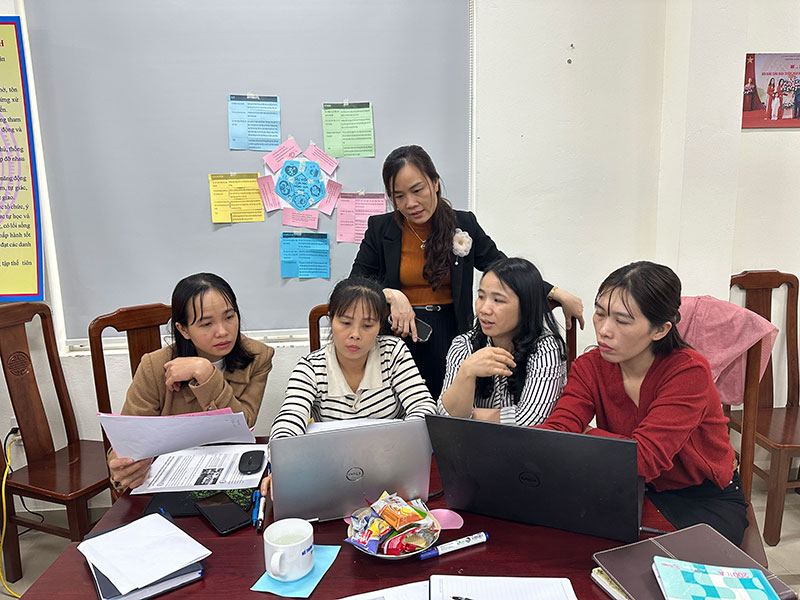Food safety education using the learning-through-play method is highly suitable for the developmental characteristics of preschool age.
On February 3, 2024, more than 20 teachers and the school broad of directors from Van Duc Kindergarten were trained in the learning-through-play method and applied it to adjust the series of food safety lessons.
Teacher Dzung, in charge of the 4-5 year old class, shared: ‘Teachers have been able to incorporate this in classes for the district-level excellent teacher exam but not in daily classes.’ In the teachers’ opinion, a ‘learning-through-play’ lesson requires effort, investment of money, and time from many people, perhaps the entire school.
However, according to Dr. Oanh, who has more than 45 years of experience applying the learning-through-play method, teachers only need to manage the classroom effectively.

With appropriate activities, teachers should create opportunities for children to be proactive and independent in their learning. Within the appropriate scope, children can make choices and decisions about the learning content or learning progress they desire. Direct instruction can be a good way to teach and explain something. Children having the opportunity to explore learning content through experience and active interaction is one of the effective ways to do so. This does not mean letting children learn knowledge on their own throughout the learning process, but the teacher guides through questions or purposeful suggestions. Teachers need to determine the appropriate time to create opportunities for children to be autonomous and how to support children’s autonomy in different learning activities.
Learning through play is a method, an approach, and at the same time, a form of implementation and a teaching technique. The learning-through-play method has been applied by international organizations such as UNICEF, Save the Children in Viet Nam, VVOB, etc. If the class applies this method, children will actively participate and develop oral language, communication skills, cognitive development, judgment ability, emotional development, and physical development.
Teachers had the opportunity to listen to experts, participate in games, and discuss how to apply learning through play in implementing educational activities in the preschool education curriculum.
In particular, they will review the 10 lectures on food safety that they have previously prepared and taught to children, aiming to adjust and apply the learning-through-play method. They utilize a checklist to assess whether their lessons embody all five characteristics of learning through play. Subsequently, they engage in discussions to identify areas of improvement, seeking to enhance the expression of learning through play at the highest level within their lesson plans. The five essential characteristics considered are: interest, active participation, meaningfulness, social interaction, and the provision of numerous opportunities for experimentation and child autonomy.
SAFEGRO will assist teachers in developing an instructional document using the learning-through-play method, integrating food safety education into topics within the preschool education program. This document will be based on the ’10 lectures on food safety’ created under the SAFEGRO project. The resulting materials will be widely shared with other preschools.

